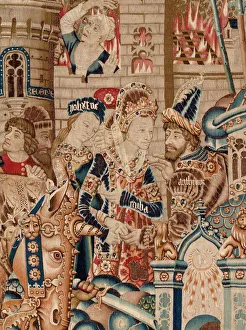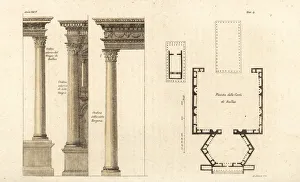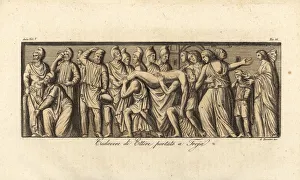Hecuba Collection
"Hecuba: The Tragic Queen of Troy and the Devastation of War" In the midst of the legendary Trojan War, Hecuba, the queen of Troy
All Professionally Made to Order for Quick Shipping
"Hecuba: The Tragic Queen of Troy and the Devastation of War" In the midst of the legendary Trojan War, Hecuba, the queen of Troy, faced unimaginable hardships and heartbreak. As depicted in various artworks throughout history, her story continues to captivate audiences. One such portrayal is found in Helenus' account of "The Destruction of Troy, " where Hecuba's anguish is palpable. She witnesses the fall of her beloved city and endures unspeakable loss, including her son Polydore. This tragic event is further immortalized in a plaster sculpture titled "Hecuba and Polydore. " Another poignant moment captured in art is when Hecuba leads a group of Trojan women offering a peplum to Athena as an act of supplication. This scene symbolizes their desperate plea for mercy amidst chaos and destruction. In Ecubas' dream within the Chamber of Troy, we glimpse into her subconscious fears as she envisions the treacherous Trojan Horse infiltrating their once impenetrable walls. The haunting image serves as a reminder that even dreams cannot escape the horrors brought by war. Outside the realm of mythology lies evidence from ancient ruins like those found at Heliopolis Temple in Baalbek. These remnants stand as silent witnesses to what was once a thriving civilization led by powerful figures like Hecuba. Amongst these ruins stands a statue honoring this formidable queen herself—a testament to her enduring legacy despite tragedy befalling her people. Artistic interpretations also shed light on other aspects surrounding Hecuba's life. In one drawing titled "Helena with Mask, " we see hints at complex relationships within Troy's royal family—perhaps alluding to conflicts between Helena (Helen) and Hecuba herself. Lastly, Vincent Camuccini's painting portrays Paris alongside his mother figure, Hecuba—an intriguing depiction that raises questions about their bond and the role Hecuba played in shaping his destiny.






















